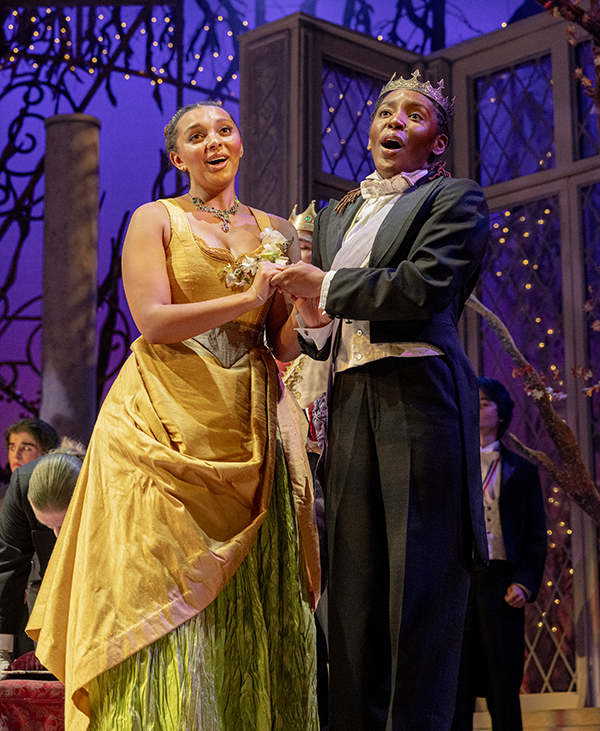by Daniel Hathaway

Imaginative staging by Stephanie Havey, skillful pacing by conductor James Feddeck, beautiful set design and costuming by Laura Carlson-Tarantowski and Chris Flaharty, respectively, plus dramatic and — for the fairies — enchanting lighting by Jeremy K. Benjamin provided a supportive environment for splendid singing by the cast and brilliant playing by the Oberlin Chamber Orchestra.
Literally thousands of versions of the Cinderella tale exist in cultures around the globe, but many of the details of Massenet’s opera date back to Charles Perrault’s 1697 Cendrillon ou la petite pantoufle de verre, which adds what have now become essential elements to the tale: a young girl mistreated by her stepmother and stepsisters, who temporarily attracts the attention of a handsome prince at a royal ball and is eventually reunited with him to become a princess herself.

Oberlin’s cast suffered no weak links. Ella Vaughan made a clear-voiced, elegant impression in the title role. Innayah Raheem was vocally splendid as Le Prince Charmant, although Cendrillon is one show where the tradition of the trouser role truly stretches the imagination.
Madame de la Haltière, who momentarily stopped the show with her entrance, was played with drollery by Kailey Pritchard. Her daughters Noémie (Molly Chun) and Dorothée (Lucie Freeman) were poster children for the privileged and clueless.

A French audience would have expected the story to be interrupted by a ballet, but lacking a corps de ballet, Oberlin made do with half a dozen dancers, who surrounded and interacted with La Fée. Conducted by Matthew Brown, the offstage chorus sang with presence, clarity, and fine intonation.
An American audience, being Disneyfied, may have expected more overt comedy — like the trying-on of the abandoned glass slipper about which much was made in the animated cartoon but downplayed in the Oberlin opera. If that scene and some others were cut for this production, that tightened up the narrative and brought the piece in at just under two hours.
That could have helped sell the opera to a largely young audience that may have been experiencing the art form for the first time. Judging from the long and enthusiastic ovation, they enjoyed themselves. So did the cast, who added a rousing chorus of Happy Birthday to the curtain calls in honor of Maestro James Feddeck.
Photo credits: Mike Crupi.
Published on ClevelandClassical.com November 21, 2024
Click here for a printable copy of this article




